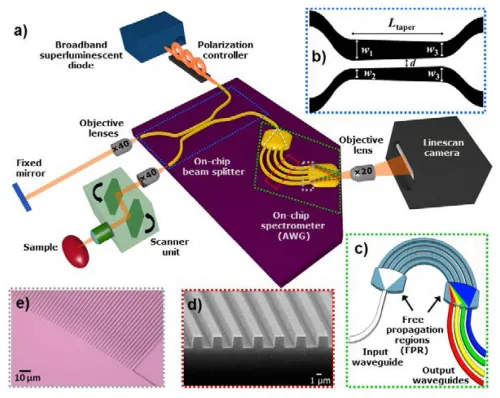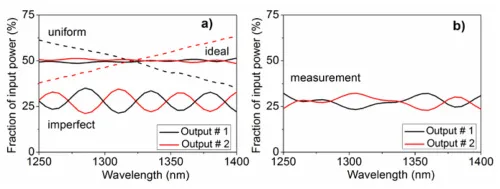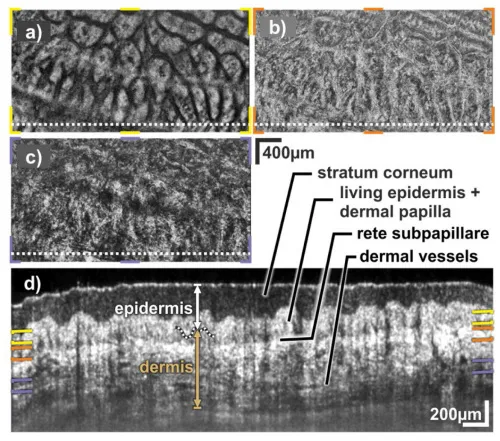Methods and Systems for On-Chip Spectrometry
This technology finds applications in biological and chemical sensing, as well as in providing portable sensing and lab-on-a-chip functionality.
Researchers
-
apparatus, systems, and methods for on-chip spectroscopy using optical switches
United States of America | Granted | 10,006,809 -
apparatus, systems, and methods for on-chip spectroscopy using optical switches
United States of America | Granted | 10,386,237 -
apparatus, systems, and methods for on-chip spectroscopy using optical
switches
United States of America | Granted | 10,852,190
Figures
Technology
The invention is a FTIR interferometer that extracts spectral density information through direct modification of the waveguide path. This results in an inexpensive and robust design that is compatible with on-chip integration. Direct optical path modulation via switching has also proved to be a far more effective method for spectral decomposition than modulating the index of refraction. Using solid-state on-chip switches eliminates reliability problems, as there are not mechanical moving parts, and also features reduced complexity and increased system robustness. The invention is both highly tolerant of fabrication errors and extremely generic. It can be constructed on a wide variety of waveguiding platforms including silicon-on insulator, III-V semiconductors and polymers.
Problem Addressed
Advances in on-chip spectroscopy are resulting in improved chemical and biological sensing applications. Fourier Transform Infrared (FTIR) technology, a leading spectroscopy system, exhibits an enhanced signal-to-noise ratio over other spectroscopy designs by utilizing Fellgett’s advantage. To achieve this, FTIR spectrometers have a variable arm path length and use modulation of the index of refraction to enable spectral decomposition of light from the interferogram. However, this approach often requires discrete optical elements resulting in a costly and bulky design. In addition, it results in increased system complexity from mechanical moving parts and reduced system robustness. Many on-chip spectrometers use spectrum splitting, a much less effective spectrometry system, due to size and power constraints. These designs have a reduced signal-to-noise ratio because they lack the Fellgett advantage present in FTIR spectrometers.
Advantages
- Superior spectral resolution compared to prior on-chip FTIR devices
- Compatible with compact on-chip integration
- Highly tolerant of fabrication errors
- Inexpensive and simple FTIR sensor design without bulkiness
- Generic design excellent on a wide array of on-chip waveguiding platforms
Publications
Akca, B. I., Považay, B., Alex, A., Wörhoff, K., de Ridder, R. M., Drexler, W., & Pollnau, M. "Miniature Spectrometer and Beam Splitter for Optical Coherence Tomography on a Silicon Chip." Optics Express 21 (2013): 16648-16656.
Kita, D. M., et al. "On-Chip Infrared Spectroscopic Sensing: Redefining the Benefits of Scaling." IEEE Journal of Selected Topics in Quantum Electronics 23, no. 2 (2017): 340-349. doi: 10.1109/JSTQE.2016.2609142.
License this technology
Interested in this technology? Connect with our experienced licensing team to initiate the process.
Sign up for technology updates
Sign up now to receive the latest updates on cutting-edge technologies and innovations.


